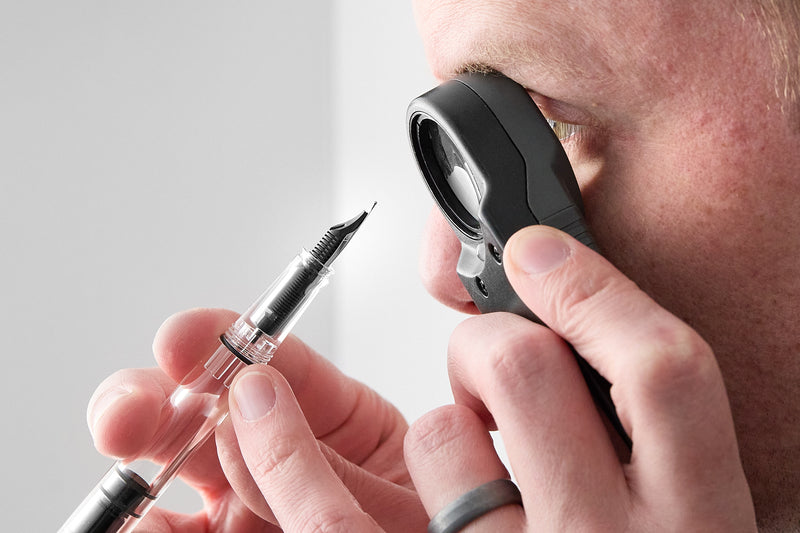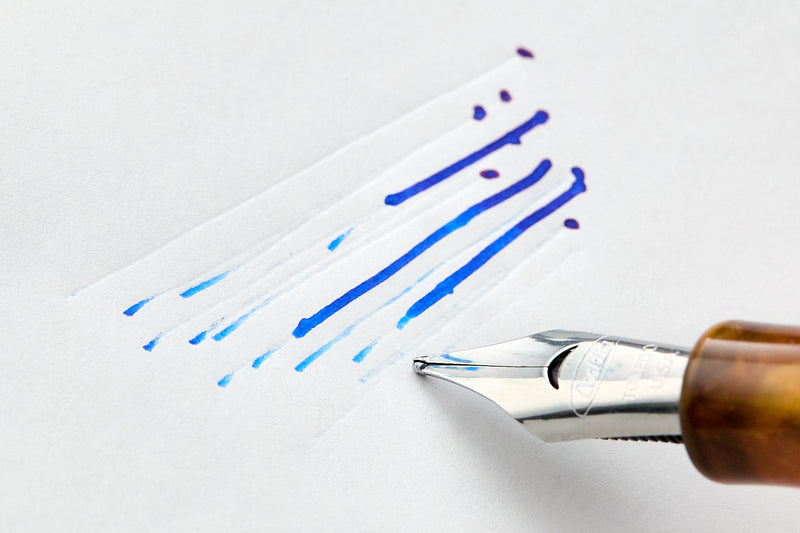5 Ways to Get Your Pen Writing Again
A pen that won't write can make for a very frustrating fountain pen experience. Especially if you are new to the hobby, it can be hard to know where to start to solve this type of issue. We created this video and blog to offer you some of our most common tips to troubleshoot writing issues with your beloved pens.
Check Ink Levels
It may sound silly but you'd be surprised how easy it is to get into a writing frenzy and not realize there's no fuel in your pen's tank. If you've suddenly run into a scratchy, dry pen, check the converter or cartridge to be sure it has ink. If it is empty, give it a refill and you'll be off and writing again. You can check out these videos for tips to help you refill a converter or cartridge.
Make Sure Cartridge is Seated Correctly
Cartridges are a great alternative if you want a more mess-free ink experience. But occasionally they present problems if they aren't properly inserted. Be sure the cartridge is inserted correctly and firmly seated. If there are any air leaks between the cartridge and feed, it will stop the capillary flow of ink down the feed. You need to also make certain that the cartridge is fully punctured and the ink saturates the feed. You may need to give it a squeeze to help move ink down the feed channel.
Clean it!
Cleaning a pen is hands down the best solution for a pen that won't write. Whether it's residual materials from the manufacturing process or clumps of dried ink from a previous fill, anything that obstructs the feed can also stop the flow of ink. To clean your nib and feed, you can use a cup of water or running water from the tap. You'll want to run water through the nib and feed to free the obstruction. If it's especially stubborn, you can try a bulb syringe for some extra muscle to push the clog out. Check out our Quick Tip for a great demonstration!
Use a Brass Sheet to Floss the Tines
It is possible for nib tines to catch and hold onto paper fibers through your writing adventures. By utilizing a brass sheet, you can remove debris from between the tines with ease. You can do this with the nib still installed on the pen or remove nib for more thorough cleaning. Simply swipe the brass sheet between the tines a few times to clear any debris with ease.
Consider Switching Inks
Is your pen writing dry or skipping mid-stroke? Your ink choice could be the problem. Give your pen a good cleaning and consider refilling with a wetter ink. If you would like some suggestions of inks to try and one to possibly avoid in a drier writing pen, check out our Top Wet and Dry Inks blog!
It may be tempting to just dab the nib on your tongue and keep your pen writing, but we do not advise this. A fountain pen is sneakily prone to spreading and you could end up with an inky tongue or teeth. We hope if you encounter a pen flow problem, you will remember some of these tips and be able to get your pen safely and quickly flowing again.



